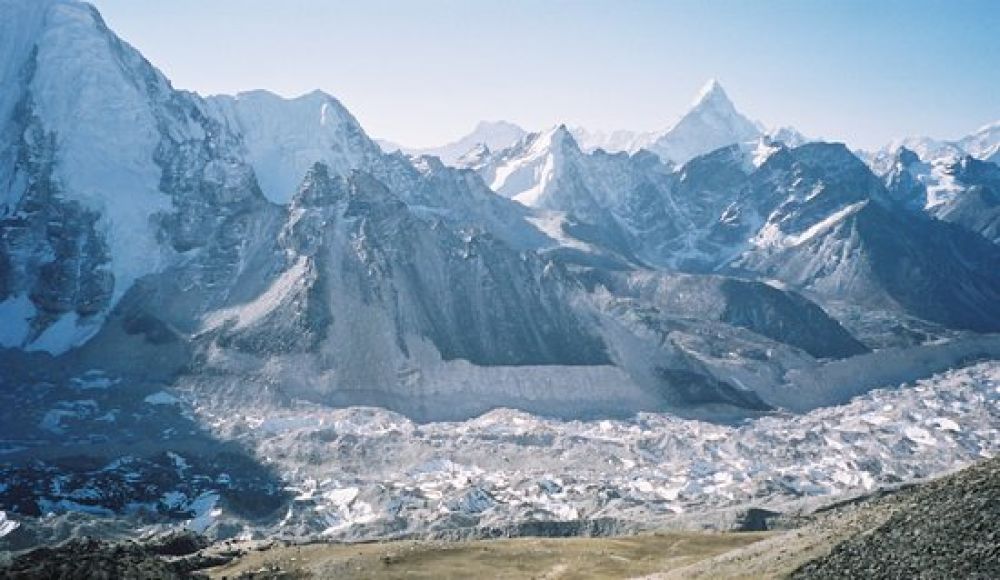

The Khumbu Glacier, nestled in the heart of Sagarmatha National Park in Nepal, stands as a testament to the majestic beauty of the Himalayas. As one of the key attractions for trekkers and mountaineers around the world, this river of ice is both a natural marvel and a challenging adventure.
Sagarmatha National Park, established in 1976, has long been a draw for those seeking to witness the highest peak in the world, Mount Everest, known locally as Sagarmatha. The park was designated as a UNESCO World Heritage Site in 1979, further cementing its status as a significant destination for international tourism. Historically, the region was first exposed to international tourism with the successful ascent of Mount Everest by Sir Edmund Hillary and Tenzing Norgay Sherpa in 1953. This event put Nepal and the Khumbu region on the map, leading to a steady increase in the number of visitors eager to experience high-altitude trekking and mountaineering.
The Khumbu Glacier itself is one of the largest glaciers in Nepal and serves as the final path for those attempting to summit Everest from the Nepalese side. This glacier has garnered significant interest not only for its sheer size but also for its challenging icefall that must be navigated by climbers. It starts from the Western Cwm to the Khumbu Icefall and spans approximately 12 kilometers (7.5 miles) in length.
In recent years, eco-tourism and sustainable travel practices have gained momentum in the Everest region. There is an increasing awareness among both operators and tourists about the importance of preserving the unique environment of the Himalayas. Tourists are more conscious of their environmental impact, often opting for eco-friendly lodges and supporting local conservation efforts.
Another trend is the rise of digital technology in enhancing tourist experiences. Many trekkers now use GPS devices, and online resources to navigate trails, and there is a greater online presence for lodges and tour companies which allows for easier planning and booking of trips to this remote region.
Adventure tourism, particularly high-altitude trekking and climbing, continues to thrive as individuals seek out the physical and mental challenges presented by the Himalayan terrain. The trek to Everest Base Camp is one of the most popular routes, offering unparalleled views of the Khumbu Glacier along the way.
The future of tourism in Sagarmatha National Park looks promising with efforts to balance visitor experiences with the preservation of the park's natural and cultural heritage. NGOs, local communities, and the government of Nepal are increasingly coming together to ensure the long-term sustainability of tourism, which is vital not only for the economy but for the protection of this heralded landscape.
As the world continues to confront the challenges of climate change, the Khumbu Glacier's significance both in terms of global heritage and scientific research is more prominent than ever. Its monitoring is critical for understanding the broader implications of glacial retreat due to warming temperatures. In this way, tourism to the Khumbu region plays a role in promoting global awareness and activism for environmental preservation.